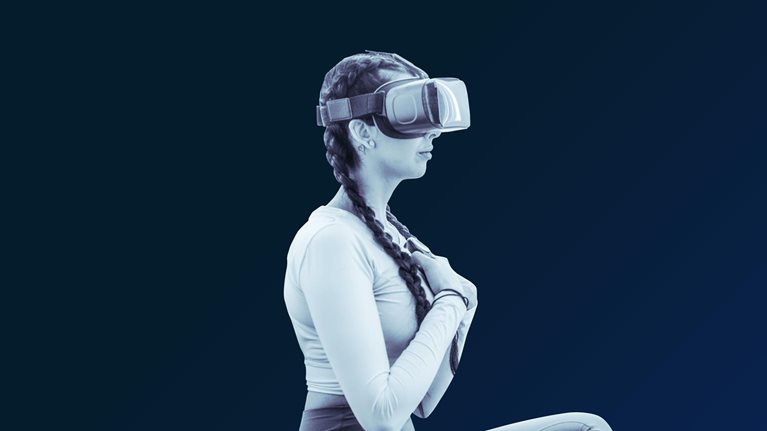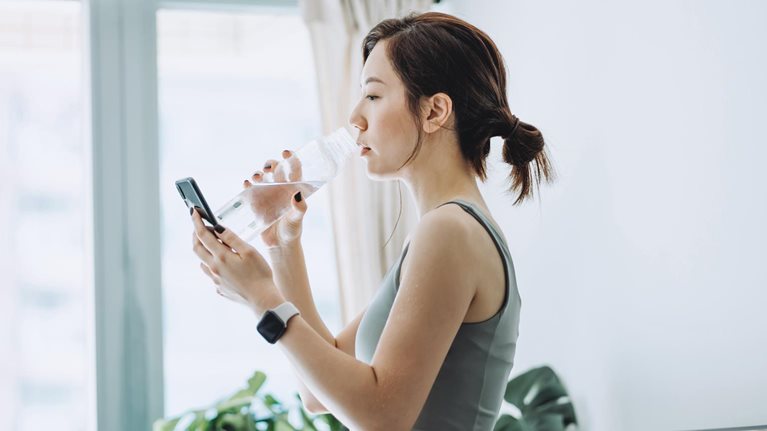As evidenced by fitness classes, wearable technology, and mindfulness apps, wellness continues to be a major priority for consumers, increasingly becoming a part of their everyday lives. We estimate the spend on wellness products and services to be more than $450 billion in the United States and growing at more than 5 percent annually.1
Building on last year’s Future of Wellness article,2 our latest survey—which reached more than 2,000 US consumers—reconfirms the existence of several trends and shows growing consumer interest in wellness across six dimensions: health, fitness, nutrition, appearance, sleep, and mindfulness. The expanded scope of this year’s survey also revealed six key new trends, which, taken together, point to considerable shifts in consumer attitudes toward wellness.
The wellness market has seen strong innovation and become increasingly crowded in recent years, particularly in areas such as personalized nutrition, vitamins, and beauty. However, the products and services currently available are not sufficiently meeting many consumers’ wellness needs. This is especially true of millennial consumers (who today represent the largest generational pool of potential spend) and Black consumers. Companies have an exciting opportunity to better serve these and other demographic groups.
Consumers are eager to find solutions that work. The companies that thrive will be those that can identify and target unmet needs through offerings that are thoughtful, differentiated, tailored, and—increasingly—that target multiple dimensions of wellness.
Wellness is a growing priority for consumers and investors, but unmet need remains
The wellness market is growing quickly. Overall, around 50 percent of US consumers now report wellness as a top priority in their day-to-day lives, a significant rise from 42 percent in 2020. Against the backdrop of COVID-19’s evolution from a global pandemic into an endemic disease, this increasing consumer focus on wellness looks set to continue.
To better understand the nuances of this booming market, it is useful to recap how consumers think about wellness and how this has changed. The six wellness dimensions laid out in our 2020 Future of Wellness research3 continue to accurately capture how consumers think about wellness today (Exhibit 1). These six wellness dimensions capture a range of product and service categories, including the following:
- Health: over-the-counter medicine, vitamins, and personal hygiene
- Fitness: fitness clubs, studios, at-home fitness equipment, and fitness wearables
- Nutrition: diet programs, subscription food services, nutrition apps, and juice cleanses
- Appearance: skin care, dermo-cosmetics, hair care, and salon services
- Mindfulness: counseling or therapy, meditation studios, and mindfulness apps
- Sleep: sleep supplements, app-enabled sleep trackers, and other sleep-enhancing products

Our latest research suggests that the lines between wellness dimensions are becoming less distinct. Consumers increasingly value and seek out products and services that can address needs across several wellness dimensions (such as mindfulness and fitness or nutrition and appearance). For example, Alo, a yoga apparel brand, has expanded to provide yoga, fitness, and meditation classes through its Alo Moves mobile app. Similarly, Hum Nutrition blurs the line between nutrition, health, and appearance by offering a range of vitamins and supplements designed to improve mood, skin, hair, and other physical characteristics.
As consumer demand for wellness products and services increases, the market has become increasingly crowded, and early-stage investments in the health and wellness space have ballooned over the past few years. For example, by some estimates, investment in digital health startups reached record highs of about $29 billion in 2021 across approximately 730 deals, compared with about $15 billion across approximately 480 deals the previous year.4
Nevertheless, consumers still feel that the available products and services are not adequately meeting their needs. Around 37 percent of surveyed consumers expressed a desire for additional products and services in both the sleep and mindfulness segments, with almost a third of customers wanting more across the remaining four wellness dimensions, as well (Exhibit 2). This is especially true among millennials and Gen Z, who desire more wellness products and services at a rate that is six to seven percentage points higher than that of the average consumer.

Many recent trends are continuing—and even accelerating
Several key consumer trends we highlighted in our previous research continue to be relevant today, and some have even accelerated in the past two years:
- Personalization of products and services continues to gain importance. This phenomenon is particularly strong among millennials and Gen Z, of whom 49 percent and 37 percent, respectively, expressed a strong preference for products, services, or apps that leverage personal data to personalize the consumer experience (Exhibit 3). Across wellness dimensions, companies have found success with a range of approaches. For example, Care/of, a personalized vitamin brand, uses a form of simple, quiz-based personalization that recommends one of several product options based on how consumers respond to questions about themselves. ZOE, a personalized-nutrition company, uses more complex personalization that offers tailored products and services based on an individual’s unique health markers (such as microbiomes or blood lipids). ZOE also offers continuous glucose monitoring to deliver immediate and personalized feedback on how different foods affect glucose levels.5

- The importance of influencers and celebrities for product discovery continues to rise, particularly for millennials. Over the past two years, the share of consumers who said influencers or celebrities were important to brand discovery rose by nearly 20 percent to around 60 percent (Exhibit 4). The growth in celebrity importance materially outmatched that of influencer importance over this period. This is likely due, in part, to the recent successes of celebrity beauty brands such as Kora Organics by Miranda Kerr, Kylie Cosmetics and Kylie Skin by Kylie Jenner, and JLo Beauty by Jennifer Lopez.

- Products continue to attract the lion’s share of spend, but services and apps continue to gain ground and now represent around 30 percent of spend. Services and apps also look set to capture a materially higher share of future spend: around 45 percent of consumers intend to spend more on services or app-based services over the next year, while around 25 percent intend to spend more on products.
- E-commerce continues to gain momentum, with the reported share of spend from e-commerce channels increasing across almost all wellness products and services over the past two years. This is due, in part, to widening product availability online, as well as lingering concerns about in-person safety in some areas. We expect the increased e-commerce penetration to be sticky over the medium term, with research suggesting that digital engagement with wellness has become a daily routine. For example, 64 percent of consumers say wellness apps are now part of their daily routine, and almost 70 percent say the same for online training and fitness services.6
New wellness trends
Our latest survey was able to identify several new wellness trends, and it also highlights some shifts in consumer preferences since 2020.
Trend one: ‘Natural’ and ‘clean’ have their limits
Our 2020 research highlighted a growing consumer preference for natural, clean products, with consumers in many cases valuing these attributes even more than product efficacy. For example, around 30 percent of respondents said they would prefer natural and clean over effective when it came to dietary supplements, compared with 24 percent who asserted the contrary.
Today, our research reveals the slowing of this trend, with consumers expressing a modest preference for efficacy across many product categories. The share of consumers who would prefer clean and natural over effective remains high in many areas—28 percent for dietary supplements and 28 percent for skin care, for example—but overall, the pendulum has started to swing back toward efficacy.
This shift is likely due, in part, to two factors. First, the protracted impact of COVID-19 has given additional credibility to health and wellness products that can show clear results. Second, there may be a degree of consumer overexposure to claims of natural or clean ingredients—or a perception that such claims are a form of greenwashing.
Potential strategy for companies. Companies need to be strategic about where and how to position their products. Labeling a product with “clean” or “natural” will not automatically entice consumers, who are discerning about these claims and who may, in fact, be more interested in the product’s efficacy. Companies should evaluate consumer preferences for the items within their portfolio to identify where messaging related to products being clean or natural would resonate most strongly. They should then seek to differentiate themselves from the messaging of peers while remaining true to their core value proposition.
By leveraging transparent capsules and product packaging alongside the tagline “the future of health is clear,” Ritual, for example, effectively differentiated itself from other vitamin brands that tout clean ingredients.
Trend two: Consumer preferences for established or private-label brands tend to increase for more mature product categories
Our survey revealed that consumers have different brand preferences for different types of products (Exhibit 5). Overall, products fall into three broad categories:

1. Private-label brands at advantage. In areas such as pain or cold relief, ingredients—often well-known active ingredients such as ibuprofen—can matter more to some consumers than brands. Private-label offerings may therefore be at an advantage due to their lower price point.
Potential strategy for companies. To break through, companies competing in these categories should move beyond the active-ingredient list, which has become table stakes, and seek ways to differentiate themselves—as Ritual did with its transparent capsules and product packaging.
2. Nascent and developing challengers. In newer categories (such as juice cleanses) or where the science is just starting to gain widespread understanding (such as gut health), emerging brands are at the forefront of product and business model innovation, which consumers recognize and value.
Potential strategy for companies. The pace of innovation within these categories presents a range of opportunities for companies looking to enter. M&A, for example, can be a promising market entry strategy. Many strong brands remain subscale, creating opportunities for strategic investors and financial sponsors alike to assess likely winners and help them scale. Recent examples include Kroger’s acquisition of meal subscription service Home Chef and Bayer’s acquisition of Care/of.7
3. Established brands at advantage. Large established brands have an advantage in areas where the active ingredients are less well known or where consumers place higher value on other attributes, such as product design or the impact the product has on appearance. In this category, large brands can leverage the trust they have built with consumers over an extended period of time.
Potential strategy for companies. Companies competing in these categories should invest in understanding the core product attributes that consumers value most. For example, Neutrogena has enlisted celebrities to endorse and market its existing products. For investors, it will be crucial to understand brand strength and degree of consumer trust; brands that have registered poor performance recently but that are trusted and well known may be positioned for a turnaround.
Trend three: Increasing focus on sleep
Better sleep is the next-highest priority for consumers after better health, with 45 percent and 47 percent of respondents, respectively, naming these dimensions as a “very high priority.” The emphasis on sleep will continue, with more than a quarter of respondents sharing that they will “definitely place a higher priority on sleep in the next two to three years,” which aligns with broader trends in the sleep industry.
As sleep science has gained momentum and attention—funding for sleep technology grew 66 percent from 2019 to 2020, for example8—so has innovation. The number of sleep device patents has increased by about 12 percent per year for the past decade.9 The range of products on the market has also increased. Consumers can now track their sleep using wearables such as WHOOP or apps such as Sleep Cycle, and they can improve the quality of that sleep through innovative sleep supplements or “smart” mattresses, such as those offered by Eight Sleep. Eight Sleep’s mattresses and mattress covers incorporate AI to monitor and improve sleep through temperature control, data analysis that feeds into optional private sleep coaching, and daily alarms.
Despite all this innovation, however, our research suggests that sleep is the area with the greatest unmet consumer need. There is still a considerable opportunity for companies competing in—or hoping to enter—this space.
Potential strategy for companies. Innovation continues apace within the sleep category, which creates an opportunity for established players to invest in emerging brands to help them scale. Successful brands in this space have tied their products to tangible, measurable improvements in sleep—including, as mentioned above, Eight Sleep.
Trend four: Millennials lead the way in wellness purchasing
Across dimensions, millennials prioritize health and wellness more than other generations, followed by Gen X and Gen Z (Exhibit 6). This trend looks set to continue, with millennials more likely than other generations to value wellness highly in two to three years. For example, 35 percent of millennials believe they will prioritize health more in the coming years, compared with 29 percent for other generations, on average.

Millennials also purchase wellness products and services more frequently than other generations, with the highest average purchase rate over the past six months of any generation. Our survey indicates that 46 percent of millennials purchased fitness products and services, for example, and 42 percent purchased nutrition products and services. In comparison, these figures were 28 percent and 24 percent, respectively, for all survey respondents.
Potential strategy for companies. Companies should invest in marketing that is carefully tailored to appeal to the millennial segment (for example, by incorporating influencers or celebrities into marketing campaigns or by investing in channels, such as Instagram or TikTok, that appeal to millennials and Gen Z). Successful examples of this include Nike, which enlisted celebrities to lead workouts on its fitness app, and Equinox, which contracted leading artists to create exclusive playlists for its fitness centers.
Trend five: Black consumers currently exhibit the greatest unmet need
While many consumers find current wellness products and services insufficient to meet their needs, particularly around sleep and mindfulness, our survey suggests that these unmet needs are most pronounced among Black consumers. For example, 47 to 55 percent of Black consumers said they needed more wellness products and services to meet their needs. In comparison, 35 to 39 percent of Asian consumers and 30 to 35 percent of White consumers said the same.
Moreover, demand from Black consumers is likely to increase at a higher rate than that of many other demographics: roughly 60 percent of Black consumers prioritized their wellness more this year than they did last year, compared with 49 percent in the overall population.
Potential strategy for companies. Companies should allocate a portion of their R&D budgets to understanding what types of products can satisfy the unmet needs of consumers in this segment.
Some companies are already moving to take advantage of these opportunities. For example, Iyoba—a small-batch, environmentally conscious beauty brand that focuses on clean beauty products for Black consumers—recently scaled distribution by partnering with Target.10
Trend six: Wellness-related employee benefits are becoming more mainstream
As interest in health and wellness swells and the post-COVID-19 war for talent heats up, there has been an acceleration in wellness-related employee benefits (Exhibit 7). For example, our survey indicates that 22 percent of employers now offer flexible scheduling to their employees. Wellness perks and enhanced healthcare services are also becoming mainstream. Around 18 percent of employers offer healthy food and snacks on-site, for example, and 18 percent now offer telehealth services. And employees take advantage of these offerings: 60 to 90 percent of respondents who had access to each benefit said they used them “extensively or regularly.”

Potential strategy for companies. Companies should also look to explore corporate partnerships that will enable them to offer their products and services as part of wellness programs for employees. Many firms offer discounts on gym memberships or subscriptions to mental-wellness apps (such as Headspace and Calm), which became especially popular during the pandemic as employees reported high levels of mental distress. Companies should remain cognizant of what types of wellness perks their employees want and what they are actually using, whether that is through data analytics (for larger companies) or forums and listening sessions.
The US wellness market is growing quickly and is likely to continue to do so. Despite the growing number of players in the market, however, our latest survey reveals that consumers’ needs are still not being fully served in many areas. There are whole consumer segments that are not satisfied with existing offerings, and there is a growing number of wellness categories that are currently underserved. Companies that understand emerging trends and are quick to react to them will be well positioned to thrive in the growing and increasingly holistic wellness ecosystem.


